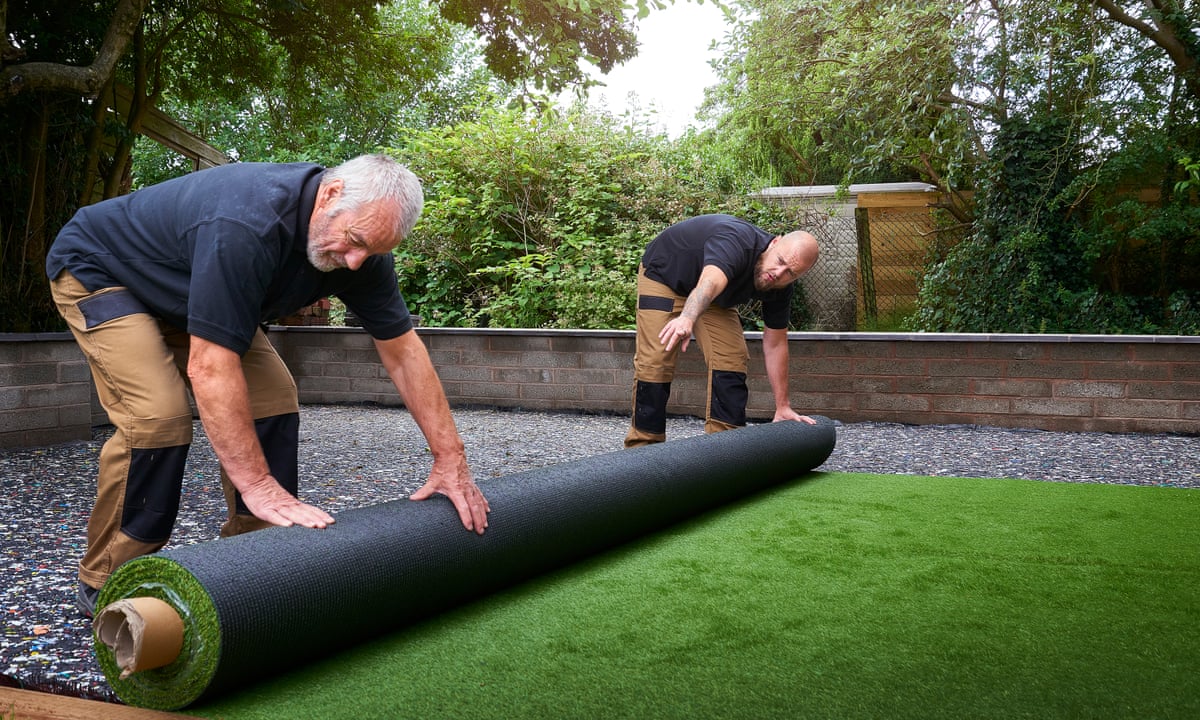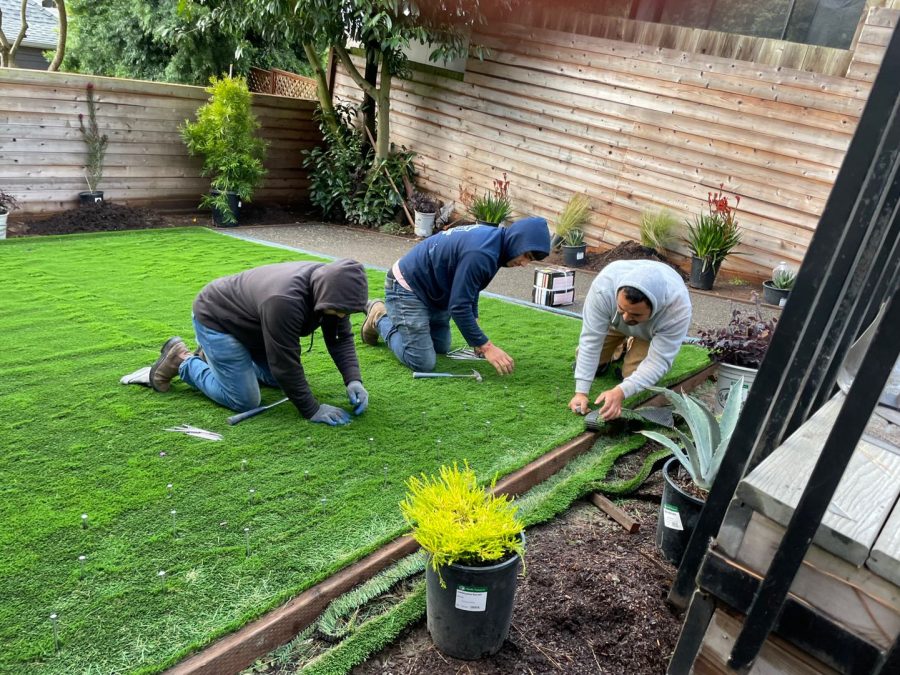Look Into the Environmental Advantages of Opting for Artificial Lawn Solutions
The fostering of man-made lawn services presents a compelling possibility to deal with pushing environmental difficulties. By significantly lowering water use and decreasing the application of hazardous chemicals, these options not just advertise sustainable landscape design however additionally protect regional ecological communities. The reduced carbon footprint associated with decreased upkeep activities contributes to an extra lasting strategy to land management. Nonetheless, the ramifications of these benefits prolong beyond simple preservation initiatives, questioning regarding their long-lasting effect on environment conservation and general environmental balance. Checking out these dimensions discloses an intricate interplay worth thinking about.
Water Conservation Conveniences
One of the most substantial advantages of artificial grass is its ability to preserve water. In comparison, fabricated grass does not require watering, significantly reducing the overall need for water resources.
By removing the requirement for regular watering, synthetic grass contributes to sustainable landscape practices and assists reduce the environmental effect of excessive water consumption. Furthermore, the preservation of water encompasses the decrease of overflow, which can bring about soil erosion and river pollution.
In addition, the installation of synthetic grass allows municipalities and house owners to allocate water resources a lot more effectively, concentrating on vital uses such as drinking water and farming. The shift in the direction of synthetic grass not only promotes accountable water usage however likewise aligns with more comprehensive environmental goals aimed at preserving all-natural sources.
As areas increasingly focus on sustainability, the water conservation advantages of fabricated turf provide a compelling situation for its fostering in household and commercial landscape design projects.
Reduced Chemical Usage
The transition to fabricated grass substantially decreases the dependence on chemical treatments generally made use of in natural lawn maintenance. Typical turf management usually includes the application of herbicides, pesticides, and plant foods to advertise growth and control insects. These chemicals can position dangers to human wellness, neighborhood wildlife, and the setting, adding to dirt and water contamination.
On the other hand, man-made grass gets rid of the demand for these hazardous materials. Once mounted, it requires very little upkeep, mostly containing routine cleansing and seldom infill replenishment. This decrease in chemical usage not just benefits the immediate setting however also adds to wider environmental stability. By decreasing the release of synthetic compounds into the community, artificial grass promotes healthier dirt and water supply.
Furthermore, the lack of chemical overflow associated with synthetic grass installments assists protect local waterways from pollution, sustaining aquatic life and maintaining biodiversity. Turf installation phoenix az. As neighborhoods increasingly focus on sustainable methods, deciding for synthetic grass provides a sensible remedy that straightens with environmental conservation objectives. With this shift, home owners can appreciate lavish eco-friendly rooms without endangering environmental wellness, paving the way for a much more sustainable future
Lower Carbon Footprint

Moreover, the setup of fabricated lawn can lead to substantial water conservation. All-natural lawns need significant amounts of water for irrigation, which not only contributes to the carbon impact connected with water removal and therapy yet likewise strains neighborhood water resources. In contrast, synthetic turf needs marginal upkeep, calling for visit this site no watering, thus significantly decreasing water usage and its associated power prices.
In addition, the longevity of fabricated grass adds to its decreased carbon effect. With a life-span of as much as 15 years or more, the requirement for constant replacements is decreased, resulting in less waste and reduced energy usage in production and getting rid of conventional yard choices. In general, fabricated lawn offers a sustainable choice for ecologically mindful landscaping.
Habitat Preservation
Environment preservation is an important consideration in the discussion over landscaping choices, particularly when comparing fabricated turf to natural lawn. All-natural grass lawns commonly call for considerable upkeep, including using chemicals, herbicides, and plant foods, which can negatively affect neighborhood ecological communities. These chemicals can leach into the soil and rivers, harming native flora and fauna and interrupting neighborhood habitats.
Artificial lawn eliminates the need for harmful chemicals, thus securing nearby wildlife and maintaining the integrity of bordering communities. The setup of fabricated grass can lead to the conversion of former yard areas into even more biodiverse landscapes, such as pollinator gardens or indigenous plant locations, which can sustain local wildlife.
Eventually, the shift to synthetic grass not only preserves water and lowers upkeep efforts yet additionally cultivates a more unified connection in between human activities and the native environment, promoting environment conservation in the process.
Long-Term Sustainability
Long-lasting sustainability is an important consider assessing the advantages of synthetic grass over standard lawn yards. Among the most significant benefits of artificial turf is its durability; it can last as much as 15-20 years with marginal upkeep, whereas natural turf calls for regular reseeding and replacement. This durability lowers additional info the need for continuous sources, such as water, plant foods, and chemicals, which are crucial for preserving a healthy and balanced yard lawn.
In addition, synthetic grass adds to a reduction in carbon emissions related to yard care equipment. Conventional grass typically need gas-powered mowers, leaners, and blowers, every one of which add to air contamination. Turf installation phoenix az. On the other hand, synthetic grass eliminates the need for such tools, advertising a cleaner setting
Moreover, the manufacturing of man-made turf increasingly makes use of recycled materials, improving its sustainability account. As manufacturers take on environment-friendly techniques, the environmental footprint of synthetic grass proceeds to lessen.

Verdict
The fostering of artificial turf solutions offers substantial environmental advantages, including substantial water conservation, minimized dependence on unsafe chemicals, and a lower carbon footprint. Furthermore, artificial grass aids in protecting all-natural environments by reducing land disruption and promoting lasting sustainability through making use of resilient materials. Collectively, these aspects emphasize the capacity of synthetic grass to add positively to ecological health and wellness and use a feasible option to traditional landscape design techniques in a significantly resource-conscious world.
In comparison, synthetic grass does not require watering, significantly reducing the total demand for water sources. By reducing the release of synthetic substances into the community, fabricated lawn promotes healthier dirt and water systems.
Moreover, the installment of fabricated lawn can result in considerable water conservation. In contrast, artificial lawn requires minimal maintenance, needing no watering, therefore substantially decreasing water use and its connected energy expenses.
